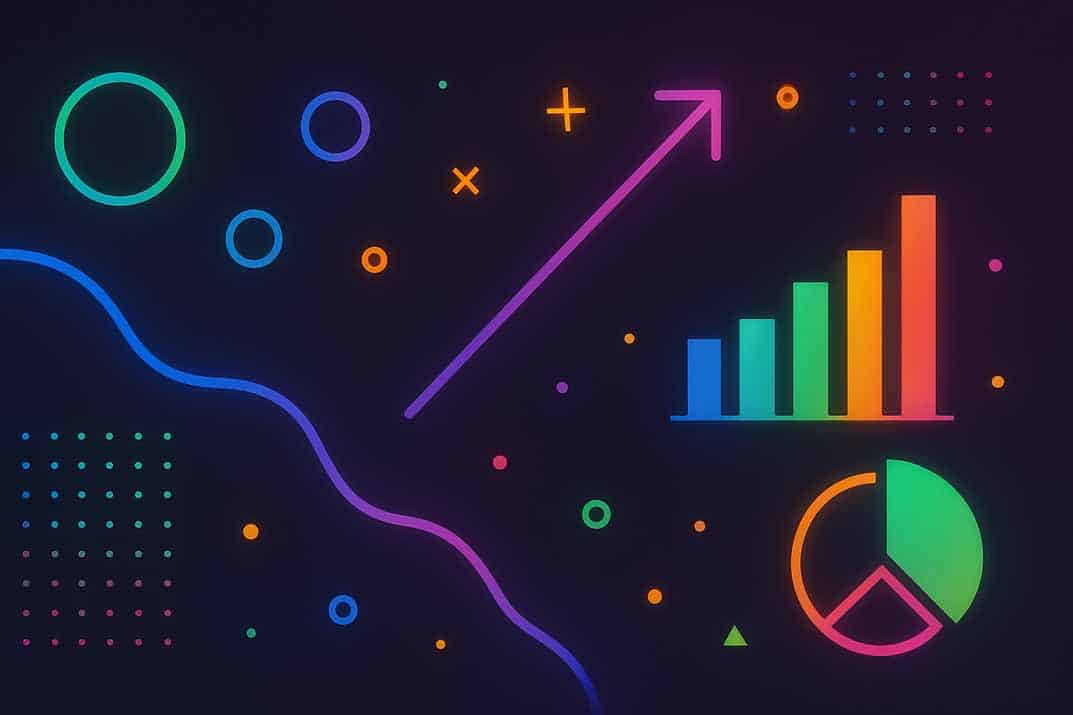
Jump to a section:
In today’s crowded marketplace, focusing only on attracting new customers can miss the massive value locked in your current base. Retention marketing ensures you nurture relationships, deepen trust, and encourage repeat purchases or subscriptions. By centering on users’ evolving needs and providing ongoing value, retention efforts can also spur organic referrals, making it a powerful growth engine.
Company & Brand Overview (example)
The following scenario demonstrates how a business might describe itself when developing a retention marketing strategy. This is purely illustrative and does not extend beyond this section.
VitalFlow Supplements is a mid-tier brand specializing in natural dietary supplements aimed at busy adults. We pride ourselves on meticulously sourced plant-based ingredients and transparent labeling, with an emphasis on inclusive design (e.g., large-print instructions, colorblind-friendly packaging). While our direct sales have grown steadily, our repeat order rate (people coming back to buy more) remains below industry benchmarks. We suspect we can better retain customers by crafting ongoing educational content, loyalty perks, and easy reordering experiences.
We see an opportunity to reduce churn by personalizing follow-up messages, offering relevant product bundles, and highlighting how our supplements support diverse dietary requirements—like vegetarian, halal, or gluten-free. An inclusive retention plan can ensure satisfied customers stay with us, improving monthly recurring revenue and establishing trust that extends to their social circles.
Situation Analysis (example)
Below is an example of how a company might assess its current retention environment prior to building a plan. Adapt these factors to your specific context and data.
Internal Factors
- Subscription Model Gaps: VitalFlow Supplements offers single purchases, but only recently added a subscription model. Sign-ups for auto-ship are low, suggesting we need improved onboarding or incentives.
- Minimal Follow-Up & Education: Customers buy once but rarely receive post-purchase advice on usage or benefits. This may cause them to switch to other brands or forget to reorder.
- Inconsistent Customer Feedback Loops: We have anecdotal evidence that people enjoy the product but find the website reorder process confusing. No structured feedback or NPS survey system currently exists.
- Inclusive Approach Partially Implemented: Our packaging is accessible, but our communications or loyalty offers might not cater well to older adults, non-native English speakers, or people seeking specific health outcomes (like postpartum or older men’s health) beyond broad messaging.
External Factors
- Fierce Competition in Supplements Market: Many brands vie for repeat buyers with strong loyalty programs and influencer endorsements. Differentiating our brand’s inclusive, high-quality approach is vital.
- Increasing Emphasis on Wellness & Preventative Care: People gravitate to consistent routines that align with their health journeys, but they also want clear evidence of effectiveness and unwavering product quality.
- Recurring Subscription Surge in E-commerce: More consumers are comfortable with auto-ship models. Demonstrating convenience, cost savings, and flexible cancellation fosters trust among different user demographics.
- Health & Regulatory Concerns: Supplements can face skepticism if not supported by transparent certifications or disclaimers. Users may churn if they sense a lack of efficacy or questionable claims.
Market & Customer Analysis
Retention marketing thrives when you recognize diverse customer journeys. Understanding each user’s motivations, challenges, and preferences helps shape messaging and perks that reinforce loyalty. We’ll also consider inclusive design so all customers feel valued and supported.
Retention Marketing Essentials
Retention marketing focuses on maximizing the lifetime value of existing customers through personalized content, supportive touchpoints, and incentives that reflect customers’ evolving needs. This extends beyond promotional emails to include community events, loyalty programs, targeted re-engagement campaigns, and streamlined renewals or reorders. Maintaining an inclusive mindset ensures that your brand’s follow-ups or membership perks remain relevant to a wide variety of users.
Key Customer Segments
- Younger Professionals & Students: They might appreciate curated health tips, quick reorder flows, or “refer-a-friend” deals. They respond well to convenience, straightforward discount codes, and app-based interactions.
- Older Adults or Caregivers: Possibly more cautious about new routines. They need easy instructions, large print guides, possibly phone-based or in-person assistance. Their retention often hinges on accessible reminders and real human connection.
- Fitness & Wellness Enthusiasts: They typically remain brand-loyal if they see consistent product improvements or synergy with their diet/workout goals. They also appreciate nutrient breakdowns, workout synergy advice, or “how this supplement fits your 30-day challenge.”
- Individuals with Specific Dietary/Health Requirements: For instance, people with digestive sensitivity, postpartum parents, or those managing chronic conditions. They want consistent, tailored suggestions and flexible, no-hassle returns if a product triggers issues.
Motivations & Barriers to Retention
- Need for Tangible Results or Ongoing Education: If customers don’t notice improvements or get bored with product usage, they might cancel. Regular, inclusive check-ins or tips keep them engaged.
- Cost Sensitivity & Economic Variations: Price changes or budget constraints can prompt users to drop subscriptions. Providing loyalty discounts or pausing options can help preserve relationships.
- Service or Shipping Friction: Delayed deliveries, complicated reorder flows, or poor customer support cause dissatisfaction. Minimizing friction fosters trust and brand satisfaction.
- Inclusive Communication Gaps: If brand updates are not offered in multiple formats (like text + visuals + plain language), certain segments (like visually impaired or non-native English speakers) might churn due to confusion or lack of engagement.
Marketing Objectives
Defining your goals helps measure the effectiveness of your retention marketing plan. For instance, you might target:
- Lower Monthly Churn by 30%: Reduce the percentage of customers discontinuing purchases or subscriptions each month within 9 months.
- Boost Repeat Purchase Rate from 40% to 60%: Encourage at least 60% of new customers to buy again within 3 months, reflecting stronger brand loyalty.
- Grow Subscription / Auto-Renew Users by 50%: Convert one-time buyers into auto-ship or membership plans, measured within a year.
- Improve NPS by 10 Points: Raise your Net Promoter Score from 40 to 50 by focusing on inclusive service and consistent user satisfaction.
- Achieve 15% Referral Sales from Existing Customers: Launch or refine your referral program to turn existing loyalists into active brand advocates, all in 12 months.
Marketing Strategy
Retention strategies intertwine product experience, customer support, and marketing communications. By aligning each facet to respect diverse user needs, you’ll cultivate trust, reduce churn, and encourage enthusiastic promotion by current customers. Below is a holistic approach to retention marketing.
Loyalty & Rewards Programs
- Tiered Rewards System: Grant points or credits for each purchase. Enable customers to redeem them for free items, exclusive product lines, or subscription discounts. Make sure the design is easy to navigate, including for older or visually impaired users.
- Inclusive Perks: Offer flexible redemption options (like discounted shipping vs. discount on product). This accommodates different financial backgrounds or shipping constraints.
- Community-Driven Features: Possibly a private online group or events for top-tier members, featuring accessible platforms for Q&A or peer discussions on product usage or wellness journeys.
Lifecycle Communications & Personalization
- Onboarding Sequences for New Customers: Provide quick starts, video tutorials (with captioning), or email tips that scale up over the first few weeks. Help them get used to the product’s routine or usage pattern.
- Segmented Emails & SMS Reminders: Create groups by usage frequency or purchase history. For example, send specialized content for postpartum mothers needing extra care instructions, or older adults preferring phone-based reorder methods.
- Anniversary & Milestone Messages: Congratulate users on monthly or yearly product usage. Possibly add celebratory small gifts or discount codes, reinforcing ongoing engagement.
- Re-Engagement Campaigns: If a user hasn’t purchased in a while, gently remind them with a personalized note referencing their last purchase or highlight new product lines that fit their historical preferences.
Community Building & Education
- Online Forum or Social Media Groups: Provide a brand-controlled platform—like a Facebook group or proprietary forum—where customers can discuss experiences, share success stories, or ask for advice.
- Live Q&A or Webinar Series: Offer inclusive video sessions covering advanced usage tips, nutritional insights, or safe product application. Provide transcriptions or sign language interpreters for accessibility.
- Supportive Content for Ongoing Needs: Publish blog articles, short videos, or newsletters that tackle common user challenges, e.g., recommended complementary lifestyle changes or “how to read supplement labels.” This fosters an informed, loyal user base.
Referral & Advocate Programs
- Structured Referral Incentives: Give referrers a small discount on next purchase, plus a welcome discount for the referred friend. Possibly allow referrers to direct a portion of that discount toward a charitable cause to align with brand values.
- Advocate or Ambassador Tier: Invite top loyal customers to test new product lines first or join advisory calls. Their deeper involvement cements them as public supporters.
- Influencer-like Roles for Regular Users: If certain fans have micro followings or local community influence, equip them with shareable content or codes to promote your brand organically.
Feedback Loops & Iteration
- Regular Surveys & NPS Tracking: After each second or third purchase, politely solicit feedback on product quality, packaging ease, or brand messaging clarity. Summaries help refine future campaigns or packaging updates.
- User Advisory Panels: Recruit a small group of diverse customers representing different age, ability, and cultural backgrounds. Periodically meet (online or in-person) to gather suggestions on new product expansions, packaging improvements, or communication styles.
- Data Analysis & Churn Spotting: Monitor patterns—like if customers often drop out after 4 months. Investigate possible reasons, run re-engagement experiments, or highlight value proposition earlier in usage to preempt drop-offs.
Marketing Mix / Tactics
Product
- Quality & Reliability: The best retention tool is delivering on product promises. Ensure consistent manufacturing standards, open ingredient listings, or performance metrics.
- Flexible Packaging or Form Factors: Offer smaller or bigger containers depending on consumption habits. Possibly design easy-open lids for older adults or those with dexterity challenges.
- Tailored Bundles & Accessories: For customers who consistently buy multiple items, create discounted sets or simplified reordering shortcuts, further facilitating long-term purchase cycles.
Price
- Subscription & Auto-Renew Discounts: Offer a 10–15% saving for monthly or quarterly auto-ship. Emphasize convenience and no-hassle pause or cancel.
- Loyalty Tiers: Reward consistent buyers with progressive perks, from free shipping to early access to new product lines.
- Sliding Scale or Nonprofit Partnerships: If relevant to your brand mission, consider partial discounts for low-income communities or philanthropic distribution, reinforcing brand goodwill and loyalty among ethically oriented buyers.
Place
- Online & Offline Channels Aligned: Maintain consistent product availability (your own website, plus select retailers) so loyal customers easily find your items in their preferred store or e-commerce marketplace.
- Accessible Purchasing Journey: If your site is the main channel, ensure it meets accessibility standards. Offer phone or chat order support for individuals not comfortable with online forms.
- Subscription Management Ease: Provide user-friendly dashboards for skipping a shipment, changing frequency, or updating payment info—reducing churn from frustration or inconvenience.
Promotion
- Lifecycle Email Series: Drip campaigns that coincide with product usage cycles, sharing tips on maximizing benefits, introducing complementary offerings, or reaffirming brand mission.
- Direct Mail & Offline Touchpoints: For older or less digital-savvy demographics, occasional postcards with reorder reminders or small discount codes can maintain brand presence.
- Social Media Retention Content: Post “customer spotlight” or success stories, share user-generated content that highlights progress or satisfaction with your brand, and encourage inclusive hashtags.
- Time-Based Re-Engagement Deals: If data indicates typical reorder windows (e.g., every 4 weeks), send targeted offers around 3.5 weeks to prompt on-time reorders without letting interest wane.
Budget & Resource Allocation
A retention marketing budget typically encompasses content creation, loyalty infrastructure, analytics, and user engagement. A possible breakdown might be:
- Lifecycle & Email Marketing (30%): Email automation tools, segmentation, personalized content creation, plus possibly phone or SMS reminders for older or specialized user groups.
- Loyalty & Referral Program (20%): Software for managing points or tiers, referral code tracking, plus any incentives (discounts, freebies).
- Analytics & Data (15%): Tools like Mixpanel or Segment, plus dashboards to measure churn, LTV, and user satisfaction.
- Community Building & Support (15%): Forums or group platforms, hosting Q&A sessions, or local meet-ups. Possibly expand staff to facilitate user experience or moderate discussions.
- Content & Collateral (15%): Videos, blog posts, and educational guides. Ensure inclusivity in design, such as transcripts or large-print PDF downloads.
- Contingency (5%): Budget for unexpected campaign expansions or urgent user requests (like specialized language translations or new tutorial videos).
Timeline & Implementation
Below is a 12-month rollout approach ensuring a steady, incremental focus on retention rather than quick, short-lived efforts.
Months 1–3
- Data Foundation: Implement or refine analytics to track subscription sign-ups, reorder rates, NPS, churn reasons. Possibly do a small phone or email survey of random existing customers for direct feedback.
- Loyalty & Referral Program Setup: Decide on a points-based or tier-based system, create simple referral codes, ensure accessible sign-up forms.
- Initial Lifecycle Emails Launch: For new customers, introduce a friendly onboarding email sequence with usage tips, inclusive instructions, and a direct feedback channel if they have challenges.
Months 4–6
- Community & Content Building: Launch user community groups or a specialized content library with how-to videos or wellness tips, each accessible to different user needs (captions, text versions).
- Segmented Campaigns: Start personalizing retention messages by location, purchase frequency, or demographic details if available. Evaluate CTR or follow-through for each sub-group.
- Referral & Advocate Push: Promote your newly minted referral program. Offer bonus points or free samples for each new user who signs up via existing clients.
Months 7–9
- Retention & Churn Check: Evaluate if monthly churn or reorder rates improved. Identify if certain user groups (like older adults or postpartum parents) still show high drop-offs. Tweak messaging or offer phone-based reorders for them.
- In-Person or Virtual Event: Possibly host a wellness or “health improvement” webinar featuring brand experts or user stories. Invite loyal customers to share experiences.
- Premium / Expanded Feature Rollout: Introduce next-level membership benefits (like priority shipping, one-on-one nutritional consults) for top spenders or long-time subscribers. Market it to raise retention among advanced users.
Months 10–12
- Optimize & Refine: Based on user surveys, analytics, or complaint logs, refine your subscription packaging or loyalty tiers. If certain content channels underperform, pivot resources to the best performing ones.
- Annual Review & Next Goals: Summarize how retention rates changed, gauge NPS improvements, measure how many new sign-ups came from referrals. If short, plan deeper user research or more robust benefits.
- Long-Term Community Sustainability: Possibly formalize a user ambassador program or monthly “town hall” calls. Keep customers engaged, heard, and appreciative of brand improvements shaped by their feedback.
Key Performance Indicators
Your retention marketing plan thrives on relevant data. Here are potential KPIs to monitor:
- Churn Rate: The percentage of customers who leave or unsubscribe within a defined period (monthly or quarterly).
- Repeat Purchase Frequency: How frequently customers reorder or renew. Are they consistently repurchasing after a set number of weeks?
- Customer Lifetime Value (LTV): The total revenue from an average user over the entire relationship—crucial for subscription-based or recurring purchase models.
- NPS (Net Promoter Score) & CSAT (Customer Satisfaction Score): High satisfaction typically correlates with reduced churn and stronger advocacy.
- Referral Rate: The percentage of new customers acquired via referral from an existing user.
- Engagement with Retention Initiatives: E.g., loyalty program participation, points redemption, or community forum usage.
- Inclusive Representation & Support Stats: Possibly track how many older adults or disabled customers mention improvements from your accessible features, or an increased sense of brand confidence due to inclusive outreach.
Contingency Plans
- Spike in Cancellations or Returns: Investigate triggers. Survey these customers for direct feedback. Offer a special “pause” option instead of cancellation, or a loyalty reactivation discount.
- Overloaded Customer Support: If re-engagement campaigns or loyalty programs lead to a surge in inquiries, ensure the support team is staffed or trained to handle varied queries (including phone-based or sign-language interpreters if relevant).
- Inaccessible Digital Channels: If user feedback reveals your website or content is not accessible enough, promptly fix color contrasts, add alt-text, or expand phone assistance hours.
- Budget Overruns: If loyalty program costs exceed forecasts (due to strong participation), consider adjusting reward thresholds slightly or seeking sponsor partnerships while maintaining fairness and goodwill.
- Competitor’s Aggressive Retention Offers: Emphasize your brand’s inclusive ethos, quality, or personal touches. Possibly test short-run deals or specialized messaging to reassure customers of your brand’s added value.
These contingency measures help ensure your retention marketing remains robust and user-friendly, even amidst unexpected changes in customer behavior or market conditions.
Conclusion
A well-planned retention marketing strategy does more than simply reduce churn—it fosters deeper relationships with diverse customers, turning them into champions who continually engage and advocate for your brand. By investing in loyalty programs, inclusive user experiences, and consistent community-building efforts, you’ll set the stage for a virtuous cycle of satisfaction and repeat business.


